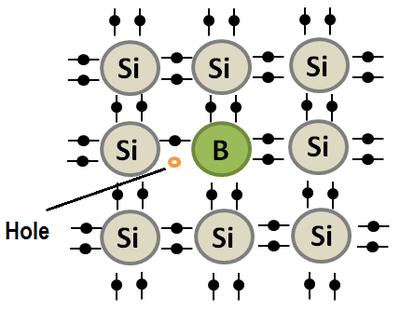Charge carrier

Charge carriers are particles or holes that freely move within a material and carry an electric charge. In most electric circuits and electric devices, the charge carriers are negatively charged electrons that move under the influence of a voltage to create an electric current. However, most circuitry is designed in terms of conventional current, which uses positive charges that move in the opposite direction of electrons.[2] Other than electrons and hypothetical positively charged particles, holes are also charge carriers. Holes are empty valence electron orbitals, and as such, they represent an electron deficiency that can move freely within a material. In semiconductor devices like diodes, two types of charge carrier - electrons and holes - converge to create a current.[2][3] See diode operation for more information about how charge carriers impact conduction in a diode.
For Further Reading
For further information please see the related pages below:
- Semiconductor
- Metal
- Photovoltaic cell
- Diode
- Hole
- Or explore a random page!
References
- ↑ Created internally by a member of the Energy Education team. Adapted from: HyperPhysics. (August 20, 2015). P and N-Type Semiconductors [Online]. Available: http://hyperphysics.phy-astr.gsu.edu/hbase/solids/dope.html
- ↑ 2.0 2.1 Electric Charge Carriers [Online]. Available:http://hyperphysics.phy-astr.gsu.edu/hbase/electric/miccur.html#c2
- ↑ Charge Carriers in Semiconductors [Online]. Available:http://www.doitpoms.ac.uk/tlplib/semiconductors/charge_carriers.php

